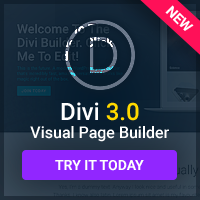As you travel around the web, you'll notice that most sites now have ads in some form or another. Some of them are subtle, but some of them just aren't – in fact, after a while, the ads at some sites can annoy you enough that you'll either block them out entirely or leave the website. This isn't good for you, and it isn't good for the site's owner – which is why you want to avoid the problem or your website.
Basically, you probably want to run ads, but you don't want to drive your visitors crazy doing it. That's why you should avoid all the following kinds of ads.
Pop-ups and Pop-unders.
The classic annoying ads are pop-ups: those ads that open a new browser window to display, and force you to close them before you can continue. Pop-unders are a variation, that pop up behind the website so the user sees them when they close their browser – not only annoying, but also quite confusing for them.
People are annoyed enough by pop-ups to actually buy dedicated pop-up blocking software, and browsers eventually started including it as a built-in feature. This means that pop-up ads now bother only the most unsophisticated of users who don't upgrade their software, generally a minority of your site's audience – pop-ups just aren't as profitable as they used to be, so there's no point in annoying people with them any more.
Floating Ads and Takeovers.
The rise of pop-up blocking software has meant that pop-ups have effectively been replaced by floating ads and website ‘takeovers' – that is, ads created using Flash that appear over the top of the page you're viewing, covering up its content. These ads are even more annoying than pop-ups, because they usually don't come up with a close button for a few seconds after they appear, and missing it slightly can cause the advertiser's site to appear. Users will often stop going to sites that make use of takeovers.
Interstitials.
Interstitials are a popular form of high-revenue advertising. The basic principle is that an ad is displayed on a full-page before the content, and then the user has to click through from there to get to the page they want. This, understandably, annoys users who just want some information – it mainly only works on sites where you have something to offer that others don't, like an exclusive story or a video. Used well, they can be a big money-spinner, but used badly they'll have people reaching for the back button.
If you do use interstitials, make sure you don't track them using cookies, as this will cause users with cookies disabled to see the ad far more times than they should. You should also use Javascript to make sure that the ad disappears automatically and quickly, without the user having to click through – this makes them far less annoying.
Animated Ads.
Part of the reason that animated GIFs have become popular on the web is their overuse in advertising. At its worst, this results in ads that cycle rapidly through hundreds of colours, garish flashing text, and even ads that appear to vibrate or otherwise move around to draw attention to themselves. As you can imagine, visitors find this distracting and infuriating when they're trying to concentrate on your site – resulting in them losing interest and clicking their back button.
Modern animated ads that use Flash can even have sound, although this is quite rare, as even the advertisers don't want to annoy people that much. Anyway, avoid.
Products to Avoid.
Finally, it's worth noting a few specific products that you should avoid running ads for, simply because the actual content of the ads themselves. Try to stay away from ads that look like fake system error messages, as non-technical users find these frightening and technical users find them deceitful. It's also worth staying away from those fake competition ads where everyone wins, and ads that are aiming to get your visitors to install ‘spyware' on their computer and send private data to them – conning your visitors into this kind of thing is unethical, and makes them less likely to come back to your site ever again.


